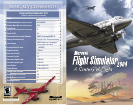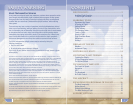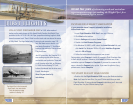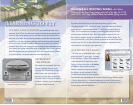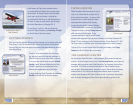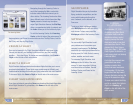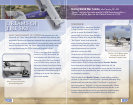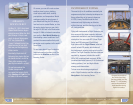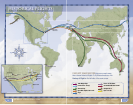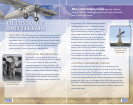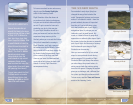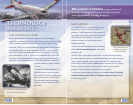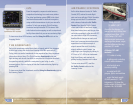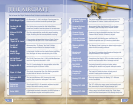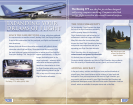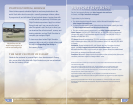
FLIGHT SIMULATOR 2004
20
A CENTURY OF FLIGHT
21
Hulton Archive/Getty Images
With a balance of ef ciency, range, speed, and
payload, the Douglas DC–3 was the rst aircraft to
earn a pro t just by carrying passengers.
The Pursuit of Speed
When Transcontinental Air Transport began service in 1929 using a
combination of railroads and Ford Tri-Motor ights to travel across the United
States, brochures touted a miraculous 48-hour coast-to-coast journey.
In the early 1930s, the new streamlined Vega became the favorite of record-
coveting pilots. Wiley Post ew a Vega during his 1931 around-the-world
ight, as did Amelia Earhart when she became the rst woman to y solo
across the Atlantic in 1932. In 1934, the de Havilland DH–88 Comet—the
rst British aircraft with retractable landing gear, aps, and variable pitch
propellers—won the MacRobertson Air Race, ying between England and
southern Australia in slightly less than
71 hours.
The swift and reliable Douglas DC–3,
which was able to carry more people
than the Ford Tri-Motor and with greater
speed and ef ciency, became one of
the most widely used transportation
aircraft in the world during the 1930s
and 1940s.
Navigation
For early pilots, the land was their chart on clear
days. Just as in the real world, it’s easiest to
navigate in Flight Simulator by simply looking out
the window and following landmarks, a technique
called pilotage. Using pilotage, a clock, and a
magnetic compass, you can practice
dead (or
deduced) reckoning.
To learn more about pilotage and dead reckoning,
read the Old-Fashioned Navigation article in the
Learning Center.
Until the 1920s, pilots relied on written ying instructions that described
air routes using the locations of prominent buildings, hills, roads, and trees.
Today’s complex aviation charts contain more than 200 symbols to help
pilots navigate. Flight Simulator’s Map offers an improved full-color terrain
display to show the location of your aircraft at any time. You can also
navigate in Flight Simulator using radio-based navigation.
To learn more about navigational aids, read the Aviation Charts, Everything
You Need to Know about a VOR, and
Automatic Direction Finder articles
in the Learning Center.
The Douglas DC–3 quickly became
the hero of many early airlines.
The DH–88 Comet races
to Melbourne, Australia,
in Flight Simulator.
Technology
Takes Off



